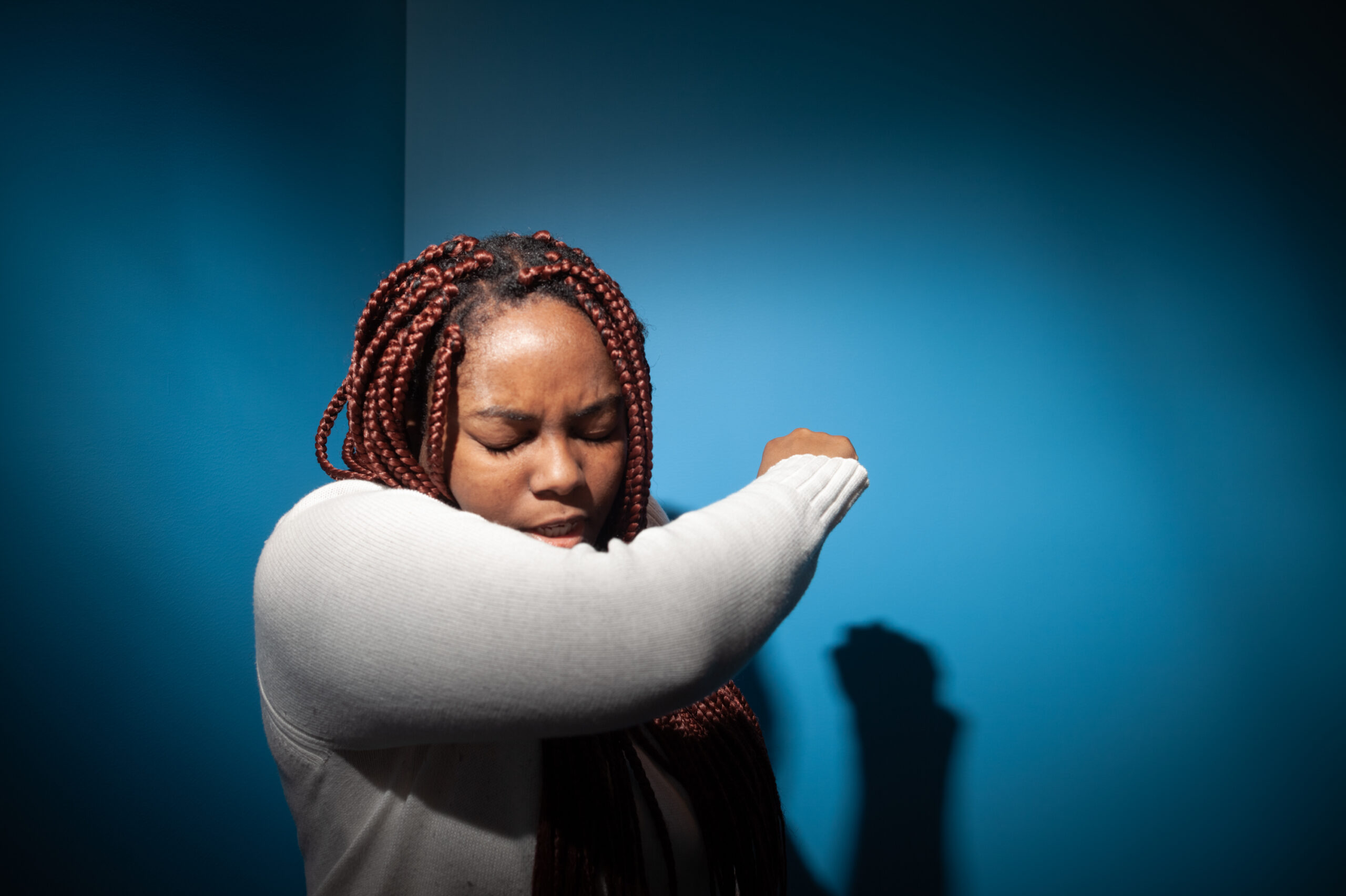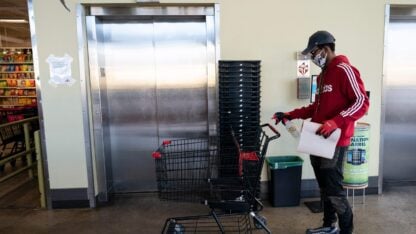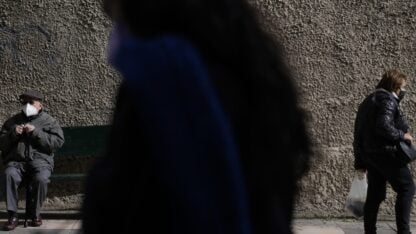Keep your distance. And don’t kiss.
Those are two pieces of advice that could be crucial in reducing the spread of coronavirus.
Public health officials say the spread has been mainly driven through people spending time indoors with others who have the disease.
“Looks like the main driver is not widespread community infection — looks like it’s household level infection,” Dr. Bruce Aylward, a senior adviser to the World Health Organization, said at a press conference in Geneva on February 25.
Indeed, data from China’s cases shows that most of the spread is happening among family who live together.
Perhaps the reason that the virus spreads among family members is the way people become infected. “The main mode of transmission is respiratory droplets” that can be produced by speaking and coughing, says Dr. Adam Lauring, associate professor of microbiology and immunology at the University of Michigan. “These droplets then can find their way into the mouths, noses of other people nearby.”
(Sneezing, another way droplets are spread, is not a common symptom of COVID-19, indicating that it’s not usually an upper respiratory infection, Aylward said).
But spread isn’t exclusively a family matter. The close contact that leads to infection can apply to a range of behaviors, says Seema Lakdawala, a virologist who studies flu transmission at University of Pittsburgh. “You can do it through shaking hands or kissing somebody who is sick, or you can do it through indirect contact transmission, which is through a contaminated surface, something like a doorknob or a handrail…[or] you pick up somebody else’s phone.”
(To learn how Lakdawala suggests cutting down on the risk of transmission at home, click here.)
Researchers aren’t sure how long droplets of COVID-19 coronavirus remain infectious on phones, but similar coronaviruses can survive on surfaces for a few hours up to a few days, depending on the environment, says WHO.
Spread takes place more readily if you’re within coughing range of someone sick, “like if you’re standing next to your kid and they cough in your face,” says Lakdawala. You could breathe in the droplets. Or they may land on a surface that somebody then touches.
While there’s no way for health authorities to regulate family interactions, steps can be taken to reduce the likelihood of close contact in crowds.
WHO says that social distancing measures, as when China extended the national lunar new year holiday to keep people from traveling or working, closed offices and canceled public transportation, have helped slow the transmission of the disease there. Such steps could be effective in other countries, including the U.S., where the virus is spreading in some communities.
Researchers looking back on prior outbreaks, such as the 1957 pandemic flu and the 2003 SARS (severe acute respiratory syndrome) epidemic, found that public health policies that kept people from gathering in public spaces — such as closing schools and canceling big events — helped slow the spread of disease.
In the current outbreak, the evidence for the way the coronavirus has spread comes from analyzing case clusters in China. Findings were published on February 28 in a report fromf the World Health Organization-China joint mission.
In mid-February, a team of international experts visited areas in China hard-hit by the coronavirus. The mission was co-led by Aylward and Wannian Liang, head of the expert panel for China’s National Health Commission.
The team toured hospitals, health clinics and community centers to determine how the coronavirus is spreading in China.
Aylward says the pattern of family spread could be a big reason for China’s apparent success in slowing the spread of the virus. Once one member of a family is infected, it’s usually easy to find other family members who may have had close contact, then put them in quarantine for 14 days.
Data from China’s government shows that their coronavirus infection rates peaked in late January and have declined ever since.
Outside of China, much of the spread has come from mass gatherings. On the Diamond Princess cruise ship, more than 700 passengers and crew caught coronavirus. More than 2,000 infections have been linked to a church group in South Korea.
“It’s very much driven by the context of a gathering” and how people disperse after it’s over, , spreading it to other individuals or groups, says Dr. Michael Ryan, executive director of the WHO Health Emergencies Programme, said at a press conference on February 24.
There is some encouraging news about coronavirus spread. So far, it seems to spread less easily than flu or measles.
“With influenza, people who are infected but not yet sick are major drivers of transmission, which does not appear to be the case for COVID-19,” said WHO director-general Tedros Adhanom Ghebreyesus at a press conference on March 3. And the measles virus is so contagious that droplets can survive in the air for 2 hours.
And you should definitely think twice before kissing. French health minister Olivier Veran has advised people to cut back on cheek kissing, a common greeting known as “la bise.” Even a kiss on the cheek from a coronavirus case could leave droplets that you would breathe in.
Tips On Preventing Coronavirus Spread At Home
Seema Lakdawala, a virologist at University of Pittsburgh, studies how viruses spread — and what can limit them.
She has some simple tips for stopping the spread of coronavirus or any other virus at home if someone is sick:
If you’re sick, don’t let your droplets circulate: Cough or sneeze inside your t-shirt. If that’s not an option, try to catch your droplets in your elbow or into a tissue instead. f you’re sick, don’t let your droplets circulate when you cough or sneeze. If you’re wearing a T-shirt, try pulling up the collar and coughing or sneezing into it (although a good sneeze will require a change of wardrobe.) If that’s not an option, try to catch the droplets in your elbow or a tissue instead.
- Keep air circulating. Dispersing droplets can keep you from getting a hefty, infectious dose. Open a window, turn on a fan.
- Use a humidifier. Keeping the humidity up will keep the protective membranes in your nose from drying out, which makes them less effective as they try to keep pathogens out. Mid-range humidity also appears to cause some viruses to decay faster.
- Clean surfaces: Household disinfectants, like bleach and alcohol-based cleaners, can kill the virus on tables, phones and other surfaces you regularly touch.
- Don’t share a cup. Don’t share eating utensils. Don’t share a toothbrush. In fact, don’t share anything that comes in direct contact with your mouth or nose.
- And of course, wash your hands: Use soap and water (or a hand sanitizer that’s 60% alcohol) and make sure you wash all the nooks and crannies.
Copyright 2020 NPR. To see more, visit https://www.npr.org.
9(MDAxODM0MDY4MDEyMTY4NDA3MzI3YjkzMw004))

9(MDAxODM0MDY4MDEyMTY4NDA3MzI3YjkzMw004))








